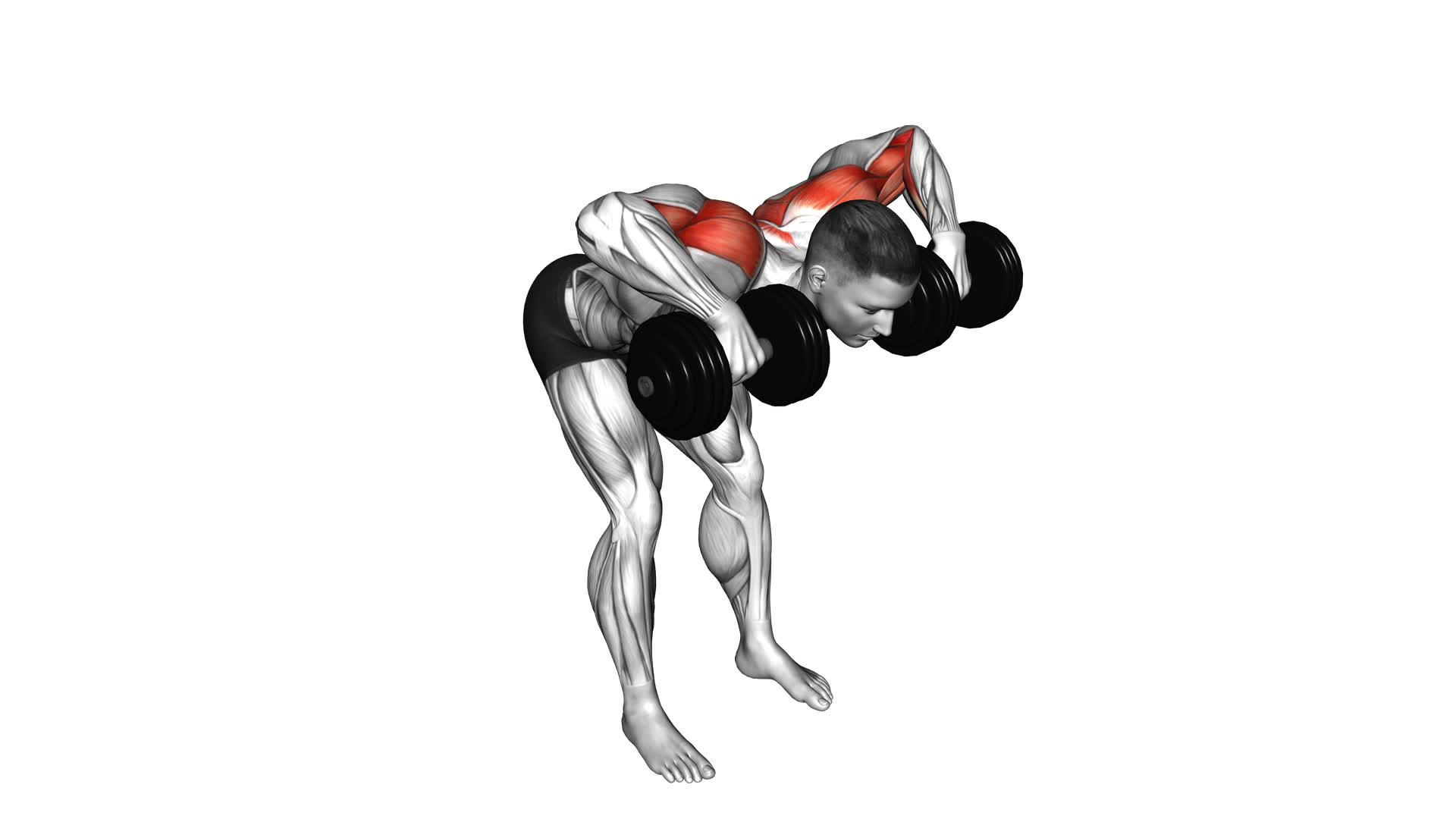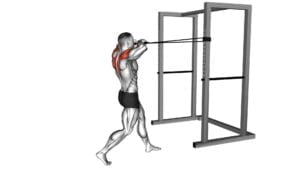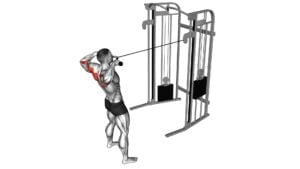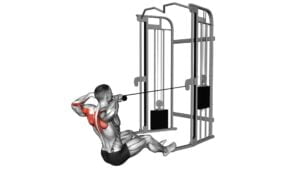Dumbbell Bent Over Face Pull – Video Exercise Guide & Tips

Are you looking for an effective upper body exercise that targets your shoulders, upper back, and traps? Look no further than the dumbbell bent over face pull.
Watch This Exercise Video
This exercise is great for improving posture, strengthening your upper body, and increasing shoulder stability. In this article, you'll find a video exercise guide and helpful tips to ensure proper form and technique.
Get ready to take your workouts to the next level and achieve maximum results.
Key Takeaways
- Targets muscles in the upper back, shoulders, and arms
- Improves posture and upper body strength
- Helps counteract forward head posture
- Alleviates neck and shoulder pain
Benefits of the Dumbbell Bent Over Face Pull
You will experience several benefits from performing the dumbbell bent over face pull exercise. This exercise primarily targets the muscles in your upper back, shoulders, and arms, helping to improve your posture and upper body strength.
One of the main benefits of the dumbbell bent over face pull is that it helps to counteract the forward head posture that's common in today's sedentary lifestyle. By strengthening the muscles in your upper back, it can help alleviate neck and shoulder pain.
Additionally, this exercise also targets the rear delts, which are often neglected in traditional shoulder exercises. This can help to create a more balanced and aesthetically pleasing physique.
To maximize the benefits of the dumbbell bent over face pull, make sure to maintain proper form throughout the exercise. Keep your core engaged, chest up, and shoulders pulled back. Focus on squeezing your shoulder blades together as you pull the dumbbells towards your face.
Start with lighter weights and gradually increase as your strength improves. Incorporating this exercise into your routine can lead to improved posture, increased upper body strength, and reduced neck and shoulder pain.
How to Set Up for the Exercise
To properly set up for the dumbbell bent over face pull exercise, begin by selecting an appropriate pair of dumbbells. Here's how to set up and position yourself for the exercise:
- Stand with your feet shoulder-width apart, holding a dumbbell in each hand.
- Bend at the hips and knees, maintaining a slight bend in your elbows.
- Keep your back straight and core engaged to stabilize your body.
- Bring the dumbbells up to shoulder level, with your palms facing each other.
- Position your hands slightly wider than shoulder-width apart.
Setting up correctly is crucial to ensure proper form and maximize the effectiveness of the exercise. By selecting the right dumbbells and following the proper positioning, you can target your upper back, rear shoulders, and rotator cuff muscles effectively.
Remember to start with a weight that challenges you but allows you to maintain proper form throughout the movement. By setting up correctly, you can minimize the risk of injury and achieve the desired results from the dumbbell bent over face pull exercise.
Proper Form and Technique
To maintain proper form and maximize the effectiveness of the dumbbell bent over face pull exercise, it's important to focus on your posture and engage the targeted muscles. Proper form ensures that you're targeting the right muscles and minimizing the risk of injury.
Start by standing with your feet shoulder-width apart and holding a dumbbell in each hand. Bend your knees slightly and hinge forward at the hips, keeping your back straight and core engaged. This bent over position will activate your upper back muscles and improve your stability during the exercise.
As you pull the dumbbells towards your face, focus on squeezing your shoulder blades together and keeping your elbows high. This movement targets your rear deltoids, rhomboids, and upper back muscles.
Avoid using momentum or swinging your body to complete the exercise. Instead, concentrate on a controlled movement, ensuring that you feel the muscles working throughout the entire range of motion.
Common Mistakes to Avoid
Maintaining proper form and technique is crucial for maximizing the effectiveness of the dumbbell bent over face pull exercise and avoiding common mistakes. Here are some common mistakes to avoid:
- Rounding your back: Keep your back straight throughout the exercise to prevent strain and maintain proper alignment.
- Using too much weight: Start with a lighter weight and gradually increase as you build strength. Using too much weight can lead to poor form and potential injury.
- Pulling the weight too high: Aim to bring the dumbbells towards your face, not your forehead or higher. Pulling too high can strain your neck and shoulders.
- Jerking the weight: Control the movement and avoid using momentum to lift the dumbbells. Jerking the weight can compromise your form and reduce the effectiveness of the exercise.
- Neglecting the scapular retraction: Focus on squeezing your shoulder blades together as you pull the dumbbells towards your face. Neglecting this movement can limit the engagement of the targeted muscles.
Variations and Progressions
Now let's explore the different grip options and variations that can take your dumbbell bent over face pulls to the next level.
By changing your grip, you can target different muscles and add variety to your workout routine.
Additionally, as you progress in strength and ability, you can increase the weight or incorporate resistance bands to overcome plateaus and continue challenging your muscles.
Different Grip Options
Choose from a variety of grip options to enhance the effectiveness of your dumbbell bent over face pull exercise. Different grip techniques offer unique benefits that target different muscle groups and improve overall strength and stability.
Here are some grip options you can try:
- Overhand Grip: This is the most common grip, with palms facing down. It primarily targets your rear deltoids and upper back muscles.
- Underhand Grip: Also known as supine grip, this grip targets your biceps and helps to engage your lower traps.
- Neutral Grip: In this grip, your palms face each other, targeting your rhomboids and middle traps.
- Mixed Grip: One hand uses an overhand grip while the other uses an underhand grip. This grip helps to improve grip strength and target different muscle fibers.
- Wide Grip: Holding the dumbbells wider than shoulder-width apart emphasizes your rhomboids and upper back muscles.
Overcoming Plateaus
To continue your progress and break through plateaus, you can incorporate variations and progressions into your dumbbell bent over face pull routine. Overcoming stagnation and breaking barriers is crucial for continued improvement in your fitness journey.
One way to do this is by adjusting the weight of the dumbbells. Gradually increasing the weight will challenge your muscles and prevent them from plateauing.
Another variation you can try is changing the grip. By using a pronated grip or a neutral grip, you can target different muscles and stimulate new growth.
Additionally, you can increase the number of repetitions or sets, or decrease the rest time between sets to add intensity to your workout.
Remember to listen to your body and gradually progress to avoid injury.
Keep pushing yourself and embracing these variations to overcome plateaus and achieve your fitness goals.
Tips for Maximizing Your Results
To maximize your results with the dumbbell bent over face pull, it's crucial to focus on proper form techniques and efficient workout strategies.
By maintaining a strong and stable posture, engaging your back muscles, and avoiding excessive swinging or jerking motions, you can ensure that you're targeting the intended muscles effectively.
Additionally, incorporating progressive overload and varying the intensity and volume of your workouts will help to continually challenge your muscles and promote growth and strength gains.
Proper Form Techniques
Ensure that you maintain a strong and stable position throughout the dumbbell bent over face pull exercise. This will help maximize your results and ensure an efficient workout.
Here are some proper form techniques to keep in mind:
- Start by standing with your feet shoulder-width apart and knees slightly bent.
- Hinge forward at your hips, keeping your back straight and core engaged.
- Hold a dumbbell in each hand with an overhand grip, palms facing your body.
- Pull the dumbbells towards your face, leading with your elbows, and squeezing your shoulder blades together.
- Lower the dumbbells back to the starting position with control.
Efficient Workout Strategies
Maximize your results and make your workouts more efficient with these strategies.
When it comes to workout efficiency, incorporating time-saving exercises is key. Choose exercises that work multiple muscle groups at once, such as squats, lunges, or push-ups. These compound exercises not only save time but also maximize the number of muscles worked in each movement.
Additionally, incorporating supersets or circuit training into your routine can help you save time by reducing rest periods and keeping your heart rate elevated throughout the workout.
Another strategy for maximizing efficiency is to plan your workouts in advance. Having a structured plan eliminates wasted time and ensures that you're making the most of your time in the gym.
Frequently Asked Questions
What Are Some Alternative Exercises That Can Target the Same Muscles as the Dumbbell Bent Over Face Pull?
To target the same muscles as the dumbbell bent over face pull, you can try alternative exercises like the cable face pull and band face pull. These exercises work the rear deltoids, upper back, and traps just like the dumbbell bent over face pull.
Incorporating these exercises into your routine can help improve your posture and strengthen these muscle groups. Remember to vary your exercises to keep challenging your muscles and prevent plateauing.
How Often Should I Incorporate the Dumbbell Bent Over Face Pull Into My Workout Routine?
To effectively incorporate the dumbbell bent over face pull into your workout routine, it's essential to consider the benefits it offers for shoulder health. This exercise targets the rear deltoids, upper back, and rotator cuff muscles.
Can the Dumbbell Bent Over Face Pull Help Improve Posture?
Improving your posture is important for overall health and confidence. One exercise that can help with this is the dumbbell bent over face pull.
Are There Any Modifications or Adaptations That Can Be Made for Individuals With Shoulder Injuries?
For individuals with shoulder injuries, there are modifications and adaptations that can be made to the dumbbell bent over face pull exercise. These modifications can help reduce stress on the injured shoulder while still reaping the benefits of the exercise for shoulder rehabilitation.
By adjusting the weight, range of motion, and grip position, you can tailor the exercise to your specific needs and prevent further injury.
Always consult with a healthcare professional or qualified trainer for personalized modifications.
Can the Dumbbell Bent Over Face Pull Be Done Using Resistance Bands Instead of Dumbbells?
Yes, you can use resistance bands as an alternative to dumbbells for the dumbbell bent over face pull exercise.
Using resistance bands offers a different type of resistance compared to dumbbells, which can be beneficial for targeting the muscles involved in the face pull.
Resistance bands also provide a more versatile and portable option for performing the exercise, making it easier to incorporate into your workouts wherever you go.
Conclusion
In conclusion, the dumbbell bent over face pull is a highly effective exercise for targeting the muscles in your upper back and shoulders. By following the proper form and technique, you can maximize your results and avoid common mistakes.
Additionally, variations and progressions can be incorporated to increase the intensity of the exercise. Incorporating this exercise into your routine can help improve your posture, strengthen your upper body, and enhance your overall fitness level.

Author
Years ago, the spark of my life’s passion ignited in my mind the moment I stepped into the local gym for the first time. The inaugural bead of perspiration, the initial endeavor, the very first surge of endorphins, and a sense of pride that washed over me post-workout marked the beginning of my deep-seated interest in strength sports, fitness, and sports nutrition. This very curiosity blossomed rapidly into a profound fascination, propelling me to earn a Master’s degree in Physical Education from the Academy of Physical Education in Krakow, followed by a Sports Manager diploma from the Jagiellonian University. My journey of growth led me to gain more specialized qualifications, such as being a certified personal trainer with a focus on sports dietetics, a lifeguard, and an instructor for wellness and corrective gymnastics. Theoretical knowledge paired seamlessly with practical experience, reinforcing my belief that the transformation of individuals under my guidance was also a reflection of my personal growth. This belief holds true even today. Each day, I strive to push the boundaries and explore new realms. These realms gently elevate me to greater heights. The unique combination of passion for my field and the continuous quest for growth fuels my drive to break new ground.







